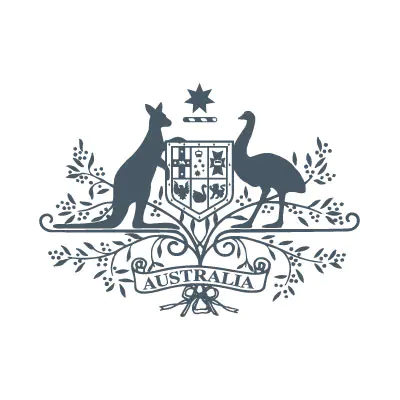
Weak U.S. Bank Oversight Risks 2008 Crisis Repeat
As United States President Donald Trump’s tariff announcements wreak havoc on stock markets, concerns are mounting over the possibility of a global financial crisis .
These concerns have intensified amid reports that the Department of Government Efficiency (DOGE), headed by Tesla founder Elon Musk, has set its sights on the Federal Deposit Insurance Corporation (FDIC) – the U.S. agency responsible for protecting deposits and administering bank insolvencies.
The targeting of the FDIC appears to mark an escalation in the Trump administration’s efforts to rein in regulatory agencies. In February, an executive order issued issued by Trump expanded his control over independent regulators, including the FDIC.
What sets the FDIC apart from other agencies targeted by DOGE is that it’s not under direct executive authority and it isn’t funded by the U.S. government. Instead, the FDIC is funded through levies on the banks it monitors – a structure designed to insulate it from political pressure.
In February, the FDIC cut 1,000 new and temporary staff as part of DOGE’s broader cuts to the federal bureaucracy. According to a regulatory official, DOGE has reportedly been reviewing the agency’s contracts and staffing .
In December, Trump administration officials reportedly floated abolishing the FDIC with prospective nominees for various bank regulatory appointments.
More recently, in February, DOGE and U.S. administration officials attempted to dismantle the Consumer Financial Protection Bureau , a separate regulator that was established after the 2008 financial crisis. A judge moved to block this process in late March after finding the administration had acted “completely in violation of law .”
There are also reports suggesting the FDIC’s regulatory and intervention functions could be transferred to the Office of the Comptroller of the Currency (OCC) . Unlike the FDIC, the OCC is under the authority of the Treasury Department , therefore lacking the same degree of operational independence. This risks further politicizing decisions on bank regulation or intervention.
Any of these reforms would be a disaster for the stability of the global financial system.
Deposit insurers like the FDIC cover losses for deposits in the event of a bank failure. In theory, this coverage is capped at $250,000 in the U.S. and $100,000 in Canada. In practice, as the failure of Silicon Valley Bank in 2023 made clear , there is no upper limit to this insurance.
This insurance serves two main purposes. First, it protects everyday people and small businesses from risks taken by their banks. Two, it prevents panic, as it means depositors have no reason to rush to withdraw their money before a bank collapses.
The FDIC and its Canadian equivalent, the Canadian Deposit Insurance Corporation , have the authority to intervene when banks fail, ensuring they are wound down in an orderly fashion without a bailout or broader economic disruption.
During the 2008 financial crisis, few mechanisms other than taxpayer-funded bailouts existed to rescue the financial system. Post-crisis reforms, like the Dodd-Frank Act , granted the FDIC more power help address systemically important bank failures with a broader set of tools. Many of these reforms were negotiated at the international level .
Project 2025, a Heritage Foundation plan that has supported many of DOGE’s interventions, has called to repeal these reforms . Dismantling or undermining the FDIC would strip the U.S. of one of its most effective ways to respond to a financial crisis.
The FDIC also plays a role in monitoring large banks, alongside the Federal Reserve and the OCC. At the international level, the FDIC works with foreign regulators to plan for the possibility of a crisis , and to implement solutions if one occurs.
In 2023, the FDIC failed to prevent the collapse of Silicon Valley Bank largely due to two key reasons: deregulation enacted during the first Trump administration and staffing shortages that existed even before the February cuts.
However, once the FDIC did intervene, it was able to contain the crisis and prevent wider fallout . Weakening the FDIC, as has occurred with other U.S. federal agencies , would greatly reduce its ability to perform this function in the future. Fewer regulators means less oversight and more risk-taking behaviour by financial institutions.
Limiting the FDIC’s capacity to intervene would effectively return the U.S. to a pre-2008 world in which large banks operated with the expectation of public bailouts. This is a hazard made more dangerous by the fact that many of those banks are much larger and more interconnected than they were back then .
Foreign regulators also rely heavily on the FDIC for information on the health of U.S. banks and U.S.-based subsidiaries of foreign banks. This co-operation was crucial to ensuring a smooth resolution when global bank Credit Suisse failed in 2023 . Without a reliable, independent FDIC, these relationships may fall apart, leaving the world with few options to avoid another financial meltdown.
Global financial stability depends, in large part, on U.S. leadership . But recent developments indicate the current administration no longer believes this responsibility is in its best interests. If this view extends to the FDIC’s role in regulating and resolving too-big-to-fail banks, the world faces risks far greater than just volatility in the stock market.
William D. O’Connell does not work for, consult, own shares in or receive funding from any company or organisation that would benefit from this article, and has disclosed no relevant affiliations beyond their academic appointment.


